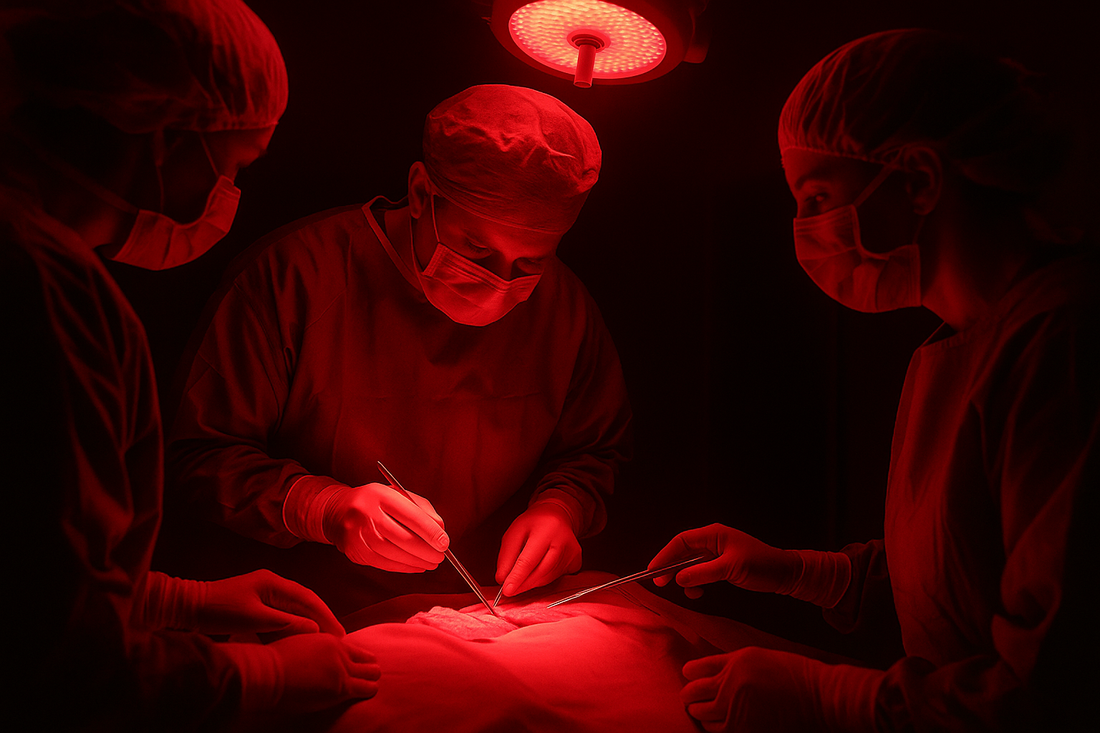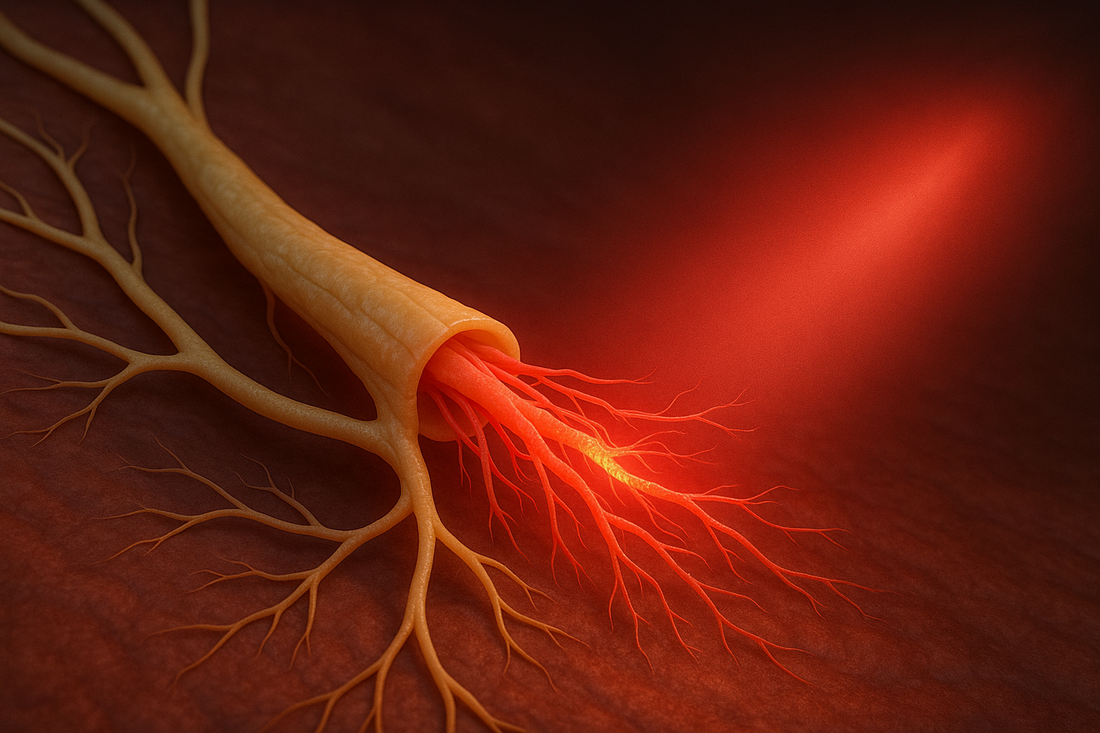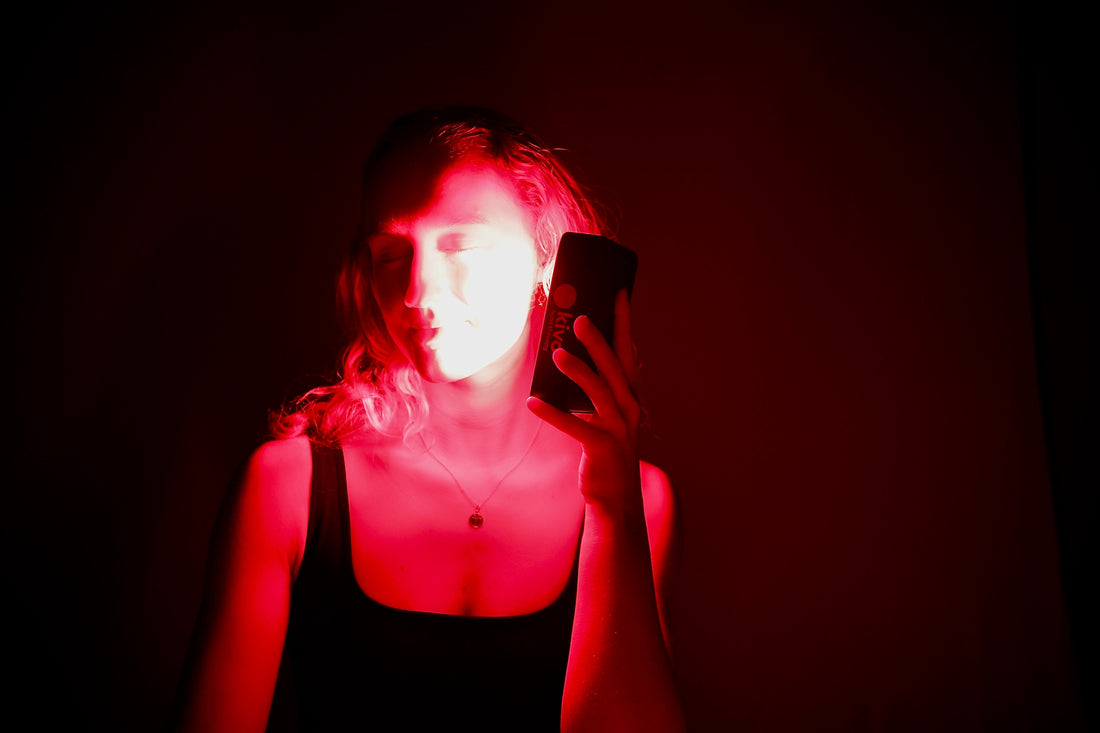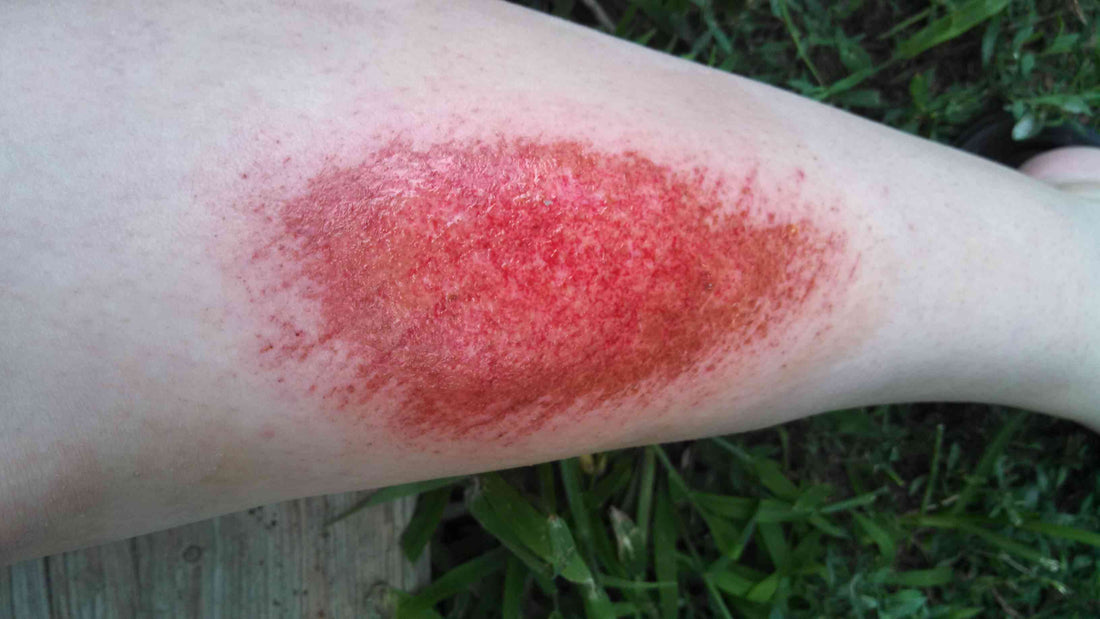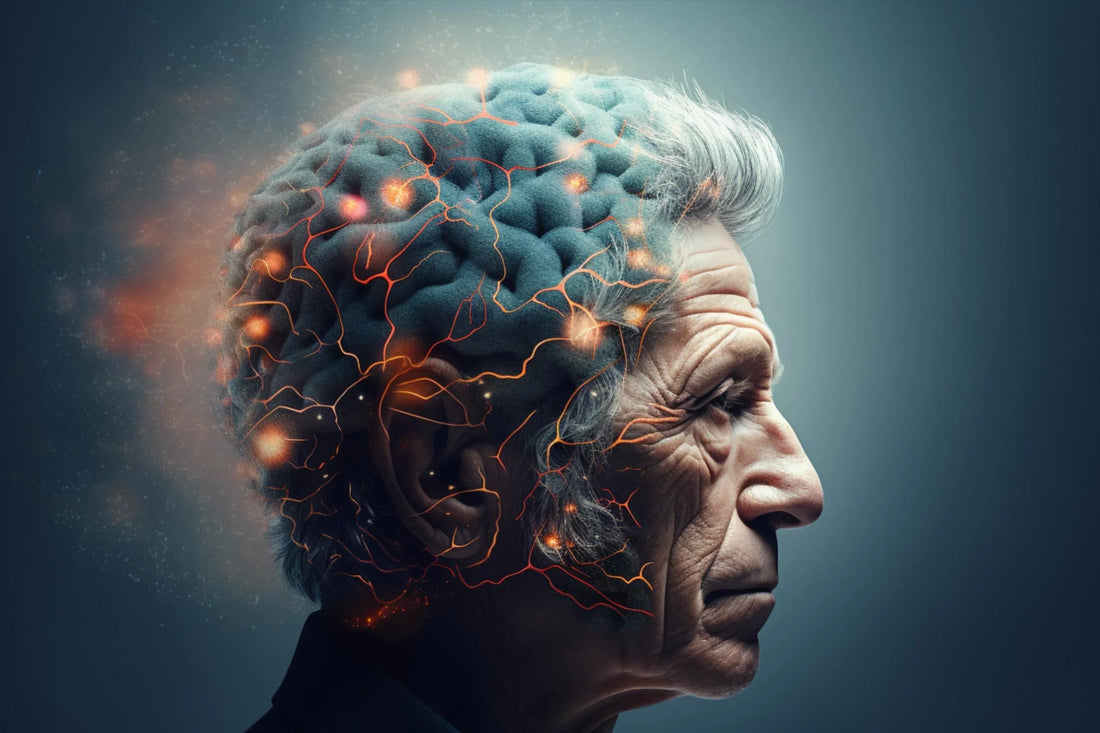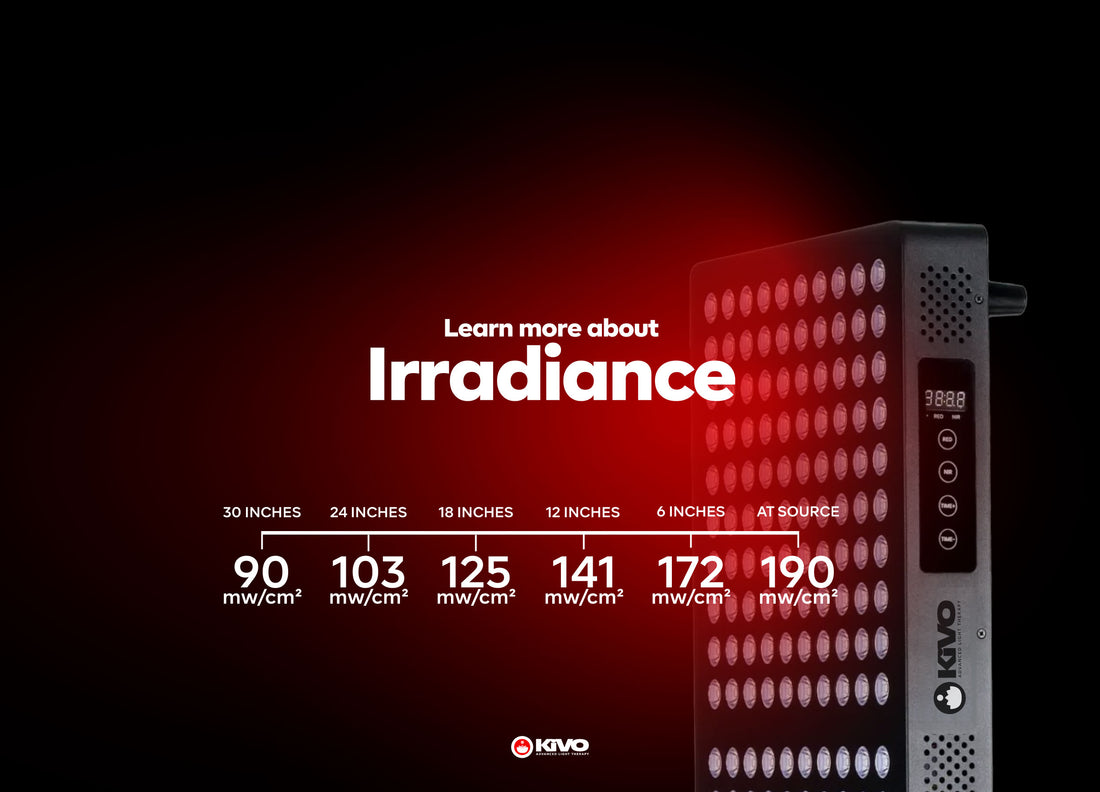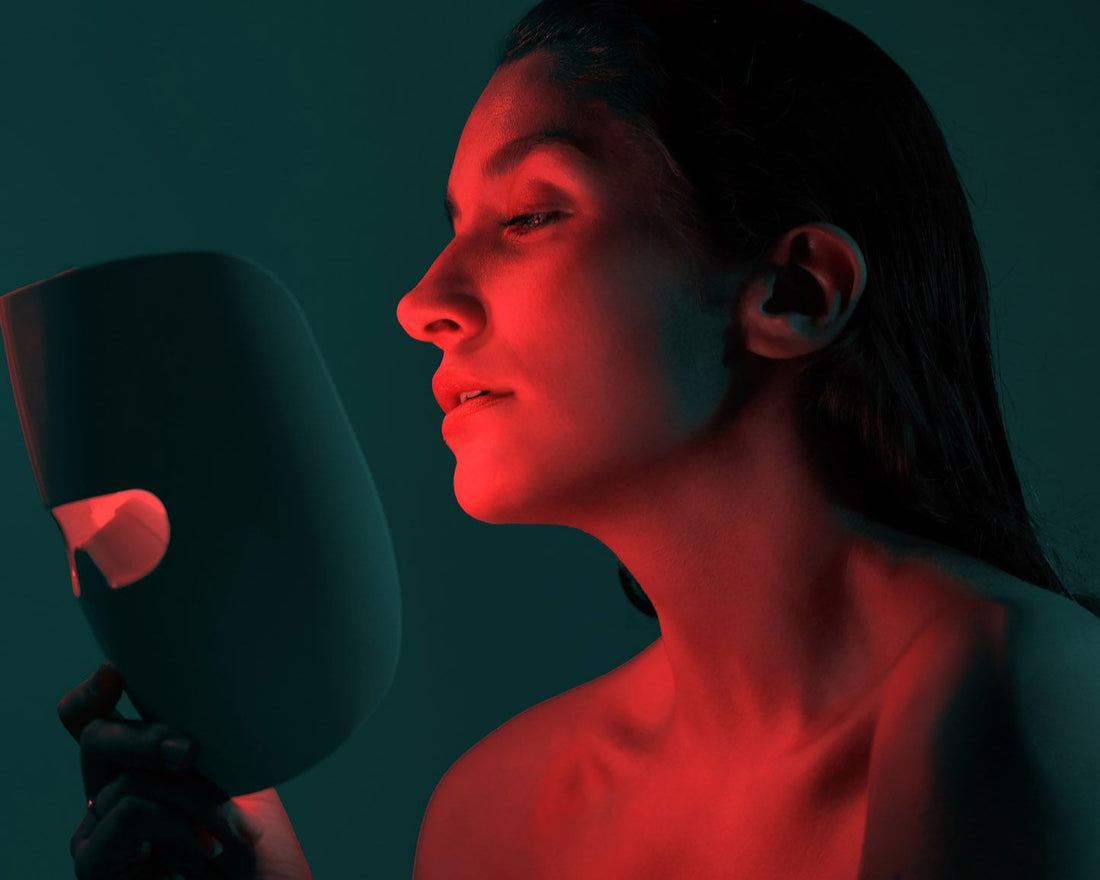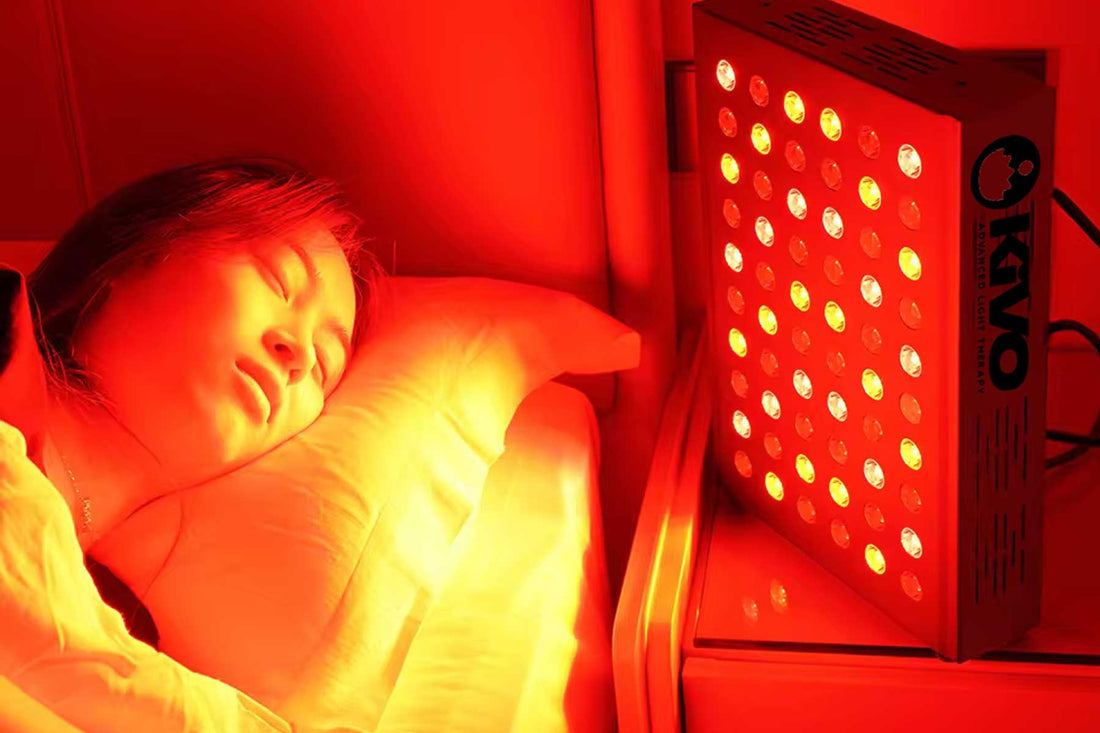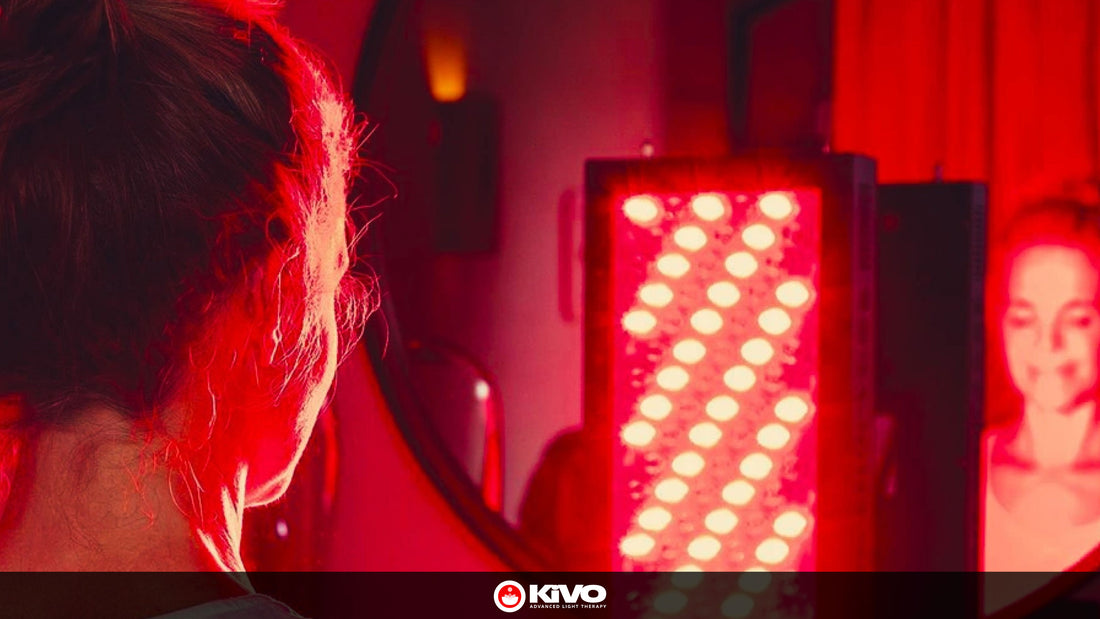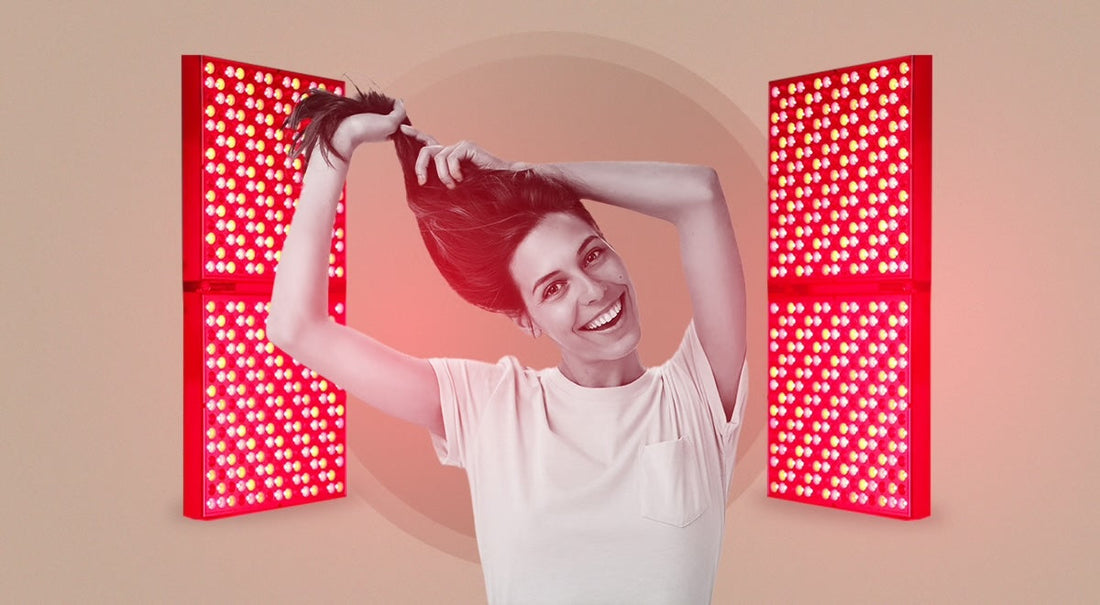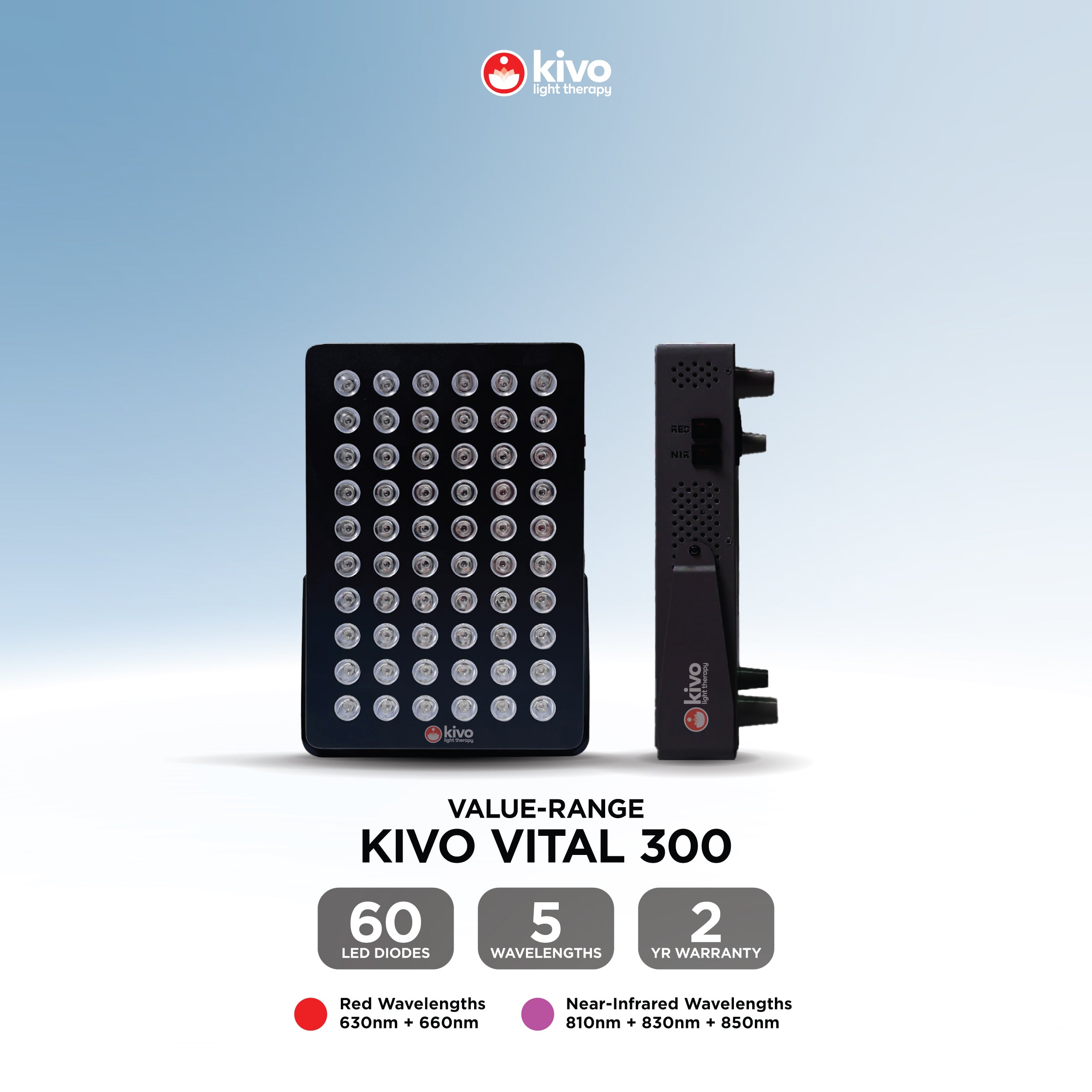Learn about Red Light Therapy
How Red Light & Near-Infrared Therapy Can Optimize Pre-Op and Post-Op Surgical Recovery
Red and near-infrared light therapy (often called photobiomodulation) can be a powerful ally before and after surgery. By boosting cellular energy, improving circulation, and reducing inflammation, this safe, non-invasive treatment helps your body recover faster, with less pain and smoother healing. When used pre-surgery, it “preconditions” tissues for better resilience, and post-surgery it supports faster wound repair and scar reduction.
Learn moreRed and Near-Infrared to help Nerve Regeneration
Nerve damage is one of the most challenging conditions to treat. Whether caused by injury, surgery, diabetes, or chronic illnesses, damage to peripheral nerves often leads to pain, numbness, tingling, and impaired function. Unlike skin or muscle, nerve tissue regenerates very slowly, and in some cases, healing is incomplete. Traditional treatments often focus on managing symptoms rather than repairing the underlying damage. In recent years, however, there has been growing interest in a non-invasive approach that may support the body’s ability to repair nerve tissue: red and near-infrared (NIR) light therapy, also known as photobiomodulation (PBM). Studies are beginning to show that PBM can stimulate cellular repair processes, improve circulation, and enhance recovery in nerve-related conditions. So, how does this work — and what does the science say? How Red and Near-Infrared Light Affect Nerve Cells Both red light (around 630–660 nm) and near-infrared light (around 810–850 nm) penetrate tissues and are absorbed by mitochondria, the “powerhouses” of cells. Specifically, they target an enzyme called cytochrome c oxidase, which is part of the mitochondrial respiratory chain. When stimulated by these wavelengths, mitochondria produce more ATP (adenosine triphosphate) — the energy currency of the cell (NIH). In nerve cells, this extra energy allows for: Axonal repair: Damaged axons (the long projections of neurons) can regrow when energy demands are met. Myelin regeneration: Light therapy may support the repair of myelin, the protective sheath around nerves that is critical for fast and accurate signal transmission. Protein synthesis: Increased ATP fuels the creation of structural proteins needed for nerve repair. In short, light therapy helps “recharge” injured nerves so they can carry out the demanding process of repair. Reducing Oxidative Stress and Inflammation Nerve injury often creates an environment of oxidative stress, where excessive reactive oxygen species (ROS) damage cellular components. Photobiomodulation helps normalize ROS levels by making mitochondria more efficient. This not only protects neurons but also reduces secondary damage that can occur after the initial injury. In addition, light therapy reduces inflammatory cytokines — signalling proteins that can prolong pain and impair healing. By calming the inflammatory response, PBM creates a more favorable environment for regeneration. Research in the Journal of Neurotrauma found that NIR therapy not only reduced oxidative stress but also improved functional recovery after nerve injury (PubMed). Stimulating Neurotrophic Factors One of the most promising findings is that red and NIR light increase levels of neurotrophic factors. These are proteins that guide nerve growth, survival, and function. Among the most important are: Nerve Growth Factor (NGF): Promotes survival and growth of sensory and sympathetic neurons. Brain-Derived Neurotrophic Factor (BDNF): Supports synaptic plasticity, learning, and repair. A study published in Neuroscience Letters found that PBM increased expression of BDNF and NGF in animal models, leading to enhanced axon regeneration and functional recovery (NIH). This means that light therapy doesn’t just provide energy; it also helps activate the genetic and molecular programs necessary for nerves to rebuild themselves. Improving Circulation and Nutrient Delivery Nerves, especially peripheral nerves, have limited blood supply compared to other tissues. Poor circulation can slow healing and leave damaged nerves starved of oxygen and nutrients. Near-infrared light penetrates deeper than red light and stimulates nitric oxide release, which relaxes blood vessels and improves microcirculation. A study in Lasers in Surgery and Medicine demonstrated that animals treated with NIR after nerve injury had faster functional recovery and improved nerve conduction velocity compared to controls (PubMed). Improved blood flow is key not only for repair but also for clearing out metabolic waste products that accumulate in injured tissues. Evidence from Clinical and Preclinical Studies While much of the research has been done in animal models, the results are encouraging - and early human studies are beginning to confirm the benefits. Peripheral nerve injury: Animal studies show that PBM accelerates axonal regrowth and improves recovery of motor and sensory function. Carpal tunnel syndrome: Clinical trials using NIR light have reported reductions in pain and improvements in grip strength and nerve conduction (PubMed). Diabetic neuropathy: Studies suggest that PBM reduces pain and numbness while improving quality of life for patients with diabetic nerve damage. Post-surgical nerve recovery: Patients treated with red/NIR light after surgery have shown reduced pain, less inflammation, and better long-term functional outcomes. Although more large-scale clinical trials are needed, the existing data strongly suggest that photobiomodulation is a safe and effective adjunct therapy for nerve regeneration. What Patients Report Beyond the lab, many people using red and near-infrared therapy devices report improvements such as: Reduced tingling and numbness Decreased nerve pain Improved muscle activation in affected areas Better coordination and grip strength While individual results vary, these reports align with the physiological mechanisms demonstrated in research. Suggested Protocol for Nerve Regeneration (Using the Kivo Elite Panel) If you are considering red and NIR light therapy at home, consistency is key. Nerve healing is slow, and results are usually seen over weeks to months. A commonly recommended protocol is: Wavelength: Red + Near-Infrared Brightness: High (Level 5 on Kivo Elite Panel) Pulse: 40 Hz (associated with neurological repair and brain wave entrainment) Duration: 15–20 minutes per affected area Frequency: 5–7 times per week Treatment Length: At least 8–12 weeks, longer for chronic conditions This can be used alongside conventional treatments such as physical therapy, medications, and lifestyle interventions. Always consult a healthcare provider before starting new therapies, especially if you have a medical condition. For more Light Therapy Treatment Protocols, visit our help site: https://help.myKivo.com Why This Matters Nerve damage can be life-changing, affecting mobility, sensation, and independence. Traditional medicine often offers limited solutions beyond pain relief. Light therapy represents a shift — instead of masking symptoms, it seeks to help the body heal itself. As the research base expands, red and near-infrared therapy may become a standard part of nerve rehabilitation protocols, both in clinics and at home. Devices like the Kivo Elite Panel make it possible to access this promising therapy safely and consistently. For those dealing with nerve injuries, neuropathy, or post-surgical recovery, photobiomodulation offers real hope: faster healing, less pain, and a better chance of regaining function.
Learn moreADHD and Red Light Therapy
ADHD is more than just a buzzword these days. With rising diagnoses across all age groups, more people are looking for drug-free alternatives to help manage symptoms like brain fog, impulsivity, low motivation, and poor focus. One emerging tool that’s getting attention? Red light therapy and near-infrared (NIR) light therapy.
Learn moreThe Healing Power of Red Light and Near-Infrared Light on Burns
Burn injuries, which can range from minor to severe, are a common medical concern that often require comprehensive treatment to ensure proper healing and recovery. Traditional treatments typically involve wound care, pain management, and infection prevention. However, the integration of photobiomodulation (PBM) therapy, specifically using red light and near-infrared (NIR) light, has shown promising results in enhancing the healing process. This blog post delves into the benefits of red light and NIR light in healing burns, supported by scientific research and clinical studies. Understanding Burns and Their Treatment Burns are classified based on the depth and extent of tissue damage: First-degree burns: Affect the outer layer of the skin (epidermis), causing redness, pain, and swelling. Second-degree burns: Extend into the dermis, resulting in blisters, severe pain, and potential scarring. Third-degree burns: Penetrate through the entire dermis and affect deeper tissues, leading to white or charred skin and loss of sensation. Effective treatment of burns involves multiple steps, including cleaning the wound, managing pain, preventing infection, and promoting tissue regeneration. While traditional treatments remain essential, the incorporation of PBM therapy using red and NIR light has been recognized for its ability to accelerate wound healing, reduce inflammation, and enhance tissue repair. Mechanisms of Red Light and Near-Infrared Light Therapy Red light (wavelengths between 620-750 nm) and NIR light (wavelengths between 750-1400 nm) penetrate the skin at different depths, targeting various cellular structures and processes. The primary mechanisms through which these light therapies facilitate healing include: Increased ATP Production: Mitochondria, the powerhouses of cells, absorb red and NIR light, leading to enhanced production of adenosine triphosphate (ATP). ATP is essential for cellular functions and energy metabolism, promoting faster cell repair and regeneration . Enhanced Cellular Proliferation and Migration: Red and NIR light stimulate the proliferation and migration of fibroblasts and keratinocytes, which are crucial for wound healing. This accelerates the formation of new tissue and re-epithelialization of the burn site . Modulation of Inflammation: Photobiomodulation helps regulate the inflammatory response by reducing pro-inflammatory cytokines and increasing anti-inflammatory cytokines. This balance minimizes tissue damage and promotes a more conducive environment for healing . Angiogenesis Stimulation: Red and NIR light promote the formation of new blood vessels (angiogenesis), improving blood flow and oxygen delivery to the burn site. Enhanced vascularization supports tissue repair and reduces the risk of infection . Collagen Synthesis: Collagen is a key protein in wound healing. Light therapy increases collagen production, strengthening the newly formed tissue and reducing the likelihood of scarring . Clinical Evidence and Studies Several studies have demonstrated the efficacy of red light and NIR light therapy in treating burns. Below are some notable examples: Reduction in Healing Time: A study published in the journal Lasers in Medical Science found that patients treated with red and NIR light therapy experienced significantly faster healing times for second-degree burns compared to those who received standard care. The treated group showed improved epithelialization and reduced pain . Enhanced Collagen Deposition: Research in the Journal of Photochemistry and Photobiology highlighted that burn wounds exposed to red and NIR light exhibited increased collagen deposition and better overall tissue architecture. This suggests a potential for reducing scar formation and improving the functional and aesthetic outcomes of burn healing . Anti-inflammatory Effects: A clinical trial reported in Photomedicine and Laser Surgery demonstrated that red light therapy effectively reduced inflammation in burn wounds. Patients showed decreased levels of inflammatory markers and improved wound closure rates . Pain Management: Pain is a significant concern in burn treatment. Studies have shown that PBM therapy can provide analgesic effects, reducing the need for pain medication and enhancing patient comfort during the healing process . Practical Applications and Considerations While the benefits of red light and NIR light therapy are well-documented, practical application requires careful consideration of various factors: Dosage and Wavelength: Optimal therapeutic outcomes depend on the correct dosage and wavelength of light. Overexposure can potentially cause harm, while underexposure may be ineffective. Clinicians must calibrate devices to deliver precise doses tailored to individual patient needs . Treatment Protocols: Establishing standardized treatment protocols is essential for consistent results. Factors such as duration, frequency, and intensity of light exposure should be based on clinical evidence and tailored to the severity of the burn . Safety and Contraindications: Although generally safe, PBM therapy may not be suitable for all patients. Contraindications include certain photosensitive conditions and the use of photosensitizing medications. Proper patient assessment and consultation are crucial before initiating therapy . Combination with Traditional Treatments: PBM therapy should complement, not replace, traditional burn treatments. An integrated approach that combines light therapy with conventional wound care can maximize healing outcomes . Future Directions and Research The field of photobiomodulation therapy is rapidly evolving, with ongoing research exploring new applications and refining existing protocols. Future directions include: Personalized Medicine: Advances in personalized medicine may enable tailored PBM treatments based on individual genetic and physiological profiles, optimizing therapeutic outcomes for burn patients . Innovative Devices: Development of advanced light therapy devices, such as wearable or portable units, can enhance accessibility and convenience for patients, facilitating at-home treatment options . Combination Therapies: Research into combining PBM therapy with other modalities, such as hyperbaric oxygen therapy or growth factor treatments, may further enhance healing outcomes and expand therapeutic options for burn care . Long-term Outcomes: Longitudinal studies assessing the long-term effects of PBM therapy on burn scars and functional outcomes will provide valuable insights into the sustained benefits and potential limitations of this treatment . Conclusion Red light and near-infrared light therapy offer a promising adjunctive treatment for burn injuries, leveraging their ability to accelerate healing, reduce inflammation, and improve tissue repair. As the body of evidence grows, integrating these therapies into standard burn care protocols can enhance patient outcomes, reduce healing times, and improve quality of life for burn survivors. Continued research and technological advancements will further solidify the role of photobiomodulation in modern medicine, unlocking new possibilities for effective and innovative burn treatments. References Hamblin, M. R. (2017). Mechanisms and applications of the anti-inflammatory effects of photobiomodulation. AIMS Biophysics, 4(3), 337-361. Wu, X., Chen, X., and Hu, C. (2019). Photobiomodulation in wound healing. Journal of Photochemistry and Photobiology B: Biology, 202, 111674. Enwemeka, C. S. (2004). The efficacy of low-power lasers in tissue repair and pain control: a meta-analysis study. Photomedicine and Laser Surgery, 22(4), 323-329. Karu, T. (2010). Mitochondrial signaling in mammalian cells activated by red and near-IR radiation. Photochemistry and Photobiology, 86(5), 942-948. Hopwood, D. (2018). The role of collagen in wound healing. International Journal of Burns and Trauma, 8(2), 23-27. Barolet, D., & Boucher, A. (2010). Prophylactic low-level light therapy for the treatment of hypertrophic scars and keloids: a case series. Lasers in Surgery and Medicine, 42(6), 597-601. Avci, P., et al. (2013). Low-level laser (light) therapy (LLLT) in skin: stimulating, healing, restoring. Seminars in Cutaneous Medicine and Surgery, 32(1), 41-52. Hopkins, J. T., McLoda, T. A., Seegmiller, J. G., & Baxter, G. D. (2004). Low-level laser therapy facilitates superficial wound healing in humans: a triple-blind, sham-controlled study. Journal of Athletic Training, 39(3), 223-229. Gigo-Benato, D., Geuna, S., Rochkind, S. (2005). Phototherapy promotes regeneration and functional recovery of injured peripheral nerve. Neurological Research, 27(2), 210-220. Hamblin, M. R. (2016). Shining light on the head: Photobiomodulation for brain disorders. BBA Clinical, 6, 113-124. Huang, Y. Y., et al. (2011). Biphasic dose response in low level light therapy. Dose-Response, 9(4), 602-618. Bjordal, J. M., et al. (2003). A systematic review with meta-analysis of the effect of low-level laser therapy (LLLT) in
Learn moreRed Light Therapy and Near Infrared Light Therapy for Anxiety
Photobiomodulation (PBM) therapy, also known as low-level light therapy (LLLT), has emerged as a promising non-invasive therapeutic approach for various medical conditions. PBM utilizes specific wavelengths of light, including red light (RL) and near-infrared (NIR) light, to induce physiological changes in the body. This treatment has shown potential in areas ranging from wound healing and pain management to improving mental health. Transcranial Photobiomodulation with Near-Infrared Light Background Transcranial photobiomodulation with near-infrared light (t-PBM with NIR) is an innovative and experimental treatment modality that aims to address mood and anxiety disorders, including generalized anxiety disorder (GAD). GAD is a prevalent mental health condition characterized by excessive and uncontrollable worry, often accompanied by physical symptoms such as restlessness, fatigue, and muscle tension. Traditional treatments for GAD include pharmacotherapy and psychotherapy, which can be effective but also have limitations, including side effects and varying efficacy among individuals. Therefore, alternative treatments are continually being sought. The pilot study under discussion recruited fifteen subjects diagnosed with GAD for an open-label 8-week investigation. The participants self-administered t-PBM daily using an LED-cluster headband designed to deliver continuous wave near-infrared light at a peak wavelength of 830 nm. The treatment parameters included an average irradiance of 30 mW/cm², an average fluence of 36 J/cm², and a total energy delivery of 2.9 kJ per session over a total forehead area of 80 cm². The primary outcome measures were the reductions in scores on the Hamilton Anxiety Scale (SIGH-A), the Clinical Global Impressions-Severity (CGI-S) subscale, and the Pittsburgh Sleep Quality Index (PSQI). Methods and Results Out of the fifteen recruited subjects (mean age 30 ± 14 years, with 67% women), twelve (80%) completed the study. The results demonstrated a significant reduction in anxiety symptoms, as evidenced by the decrease in total SIGH-A scores from 17.27 ± 4.89 to 8.47 ± 4.87 (p < 0.001), with a Cohen's d effect size of 1.47. Similarly, there was a notable improvement in the CGI-S subscale scores, from 4.53 ± 0.52 to 2.87 ± 0.83 (p < 0.001), with a Cohen's d effect size of 2.04. Significant improvements were also observed in sleep quality as measured by the PSQI. Importantly, t-PBM was well tolerated, with no serious adverse events reported. Discussion The promising results of this pilot study suggest that t-PBM with NIR can be an effective and well-tolerated treatment option for GAD. The significant reductions in anxiety symptoms and improvements in sleep quality highlight the potential of this therapy to offer relief for individuals suffering from this debilitating condition. However, the study's limitations, including its small sample size and open-label design, necessitate further research through larger, randomized, double-blind, and sham-controlled trials to validate these findings. Mechanisms of Action The therapeutic effects of t-PBM with NIR are thought to arise from several mechanisms. Near-infrared light penetrates the scalp and skull, reaching the brain tissues where it can be absorbed by chromophores, such as cytochrome c oxidase in the mitochondria. This absorption leads to increased mitochondrial activity and ATP production, which enhances cellular energy metabolism and reduces oxidative stress. Additionally, t-PBM can modulate neuronal activity and promote neuroplasticity, which are crucial for mental health. Red Light Therapy Applications and Benefits Red light therapy (RLT) typically involves light wavelengths ranging from 600 to 700 nm. Like NIR, RLT is known for its therapeutic benefits, including pain reduction, wound healing, and anti-inflammatory effects. Its ability to stimulate collagen production makes it popular in dermatology for treating skin conditions and promoting skin rejuvenation. Mechanisms of Action RLT works by penetrating the skin and being absorbed by the cells, where it stimulates mitochondrial activity. This leads to increased ATP production, which can enhance cell proliferation and repair. The anti-inflammatory effects of RLT are particularly beneficial for conditions involving chronic inflammation, such as arthritis and tendinitis. Comparing RLT and NIR While both red light and near-infrared light therapy operate on similar principles of photobiomodulation, their differences in wavelength lead to varying depths of tissue penetration. NIR light penetrates deeper into the body, making it more effective for treating deeper tissues and organs, including the brain. This is why t-PBM with NIR is particularly suited for addressing neurological and psychological conditions, while RLT is often used for surface-level treatments such as skin disorders and superficial wound healing. Potential Synergies Combining RLT and NIR therapy could potentially enhance treatment outcomes by leveraging the unique benefits of each wavelength. For example, a treatment protocol could involve RLT to address surface inflammation and wound healing, followed by NIR therapy to promote deeper tissue repair and cellular metabolism. Safety and Adverse Effects Both RLT and NIR therapy are generally considered safe, with a low risk of adverse effects. Most reported side effects are mild and transient, such as redness or discomfort at the treatment site. However, as with any therapeutic intervention, it is crucial to follow appropriate guidelines and protocols to minimize risks and maximize benefits. Conclusion The pilot study on transcranial photobiomodulation with near-infrared light for generalized anxiety disorder offers compelling preliminary evidence for its anxiolytic effects. The significant improvements in anxiety symptoms and sleep quality observed in the study underscore the potential of t-PBM with NIR as a non-invasive and well-tolerated treatment alternative for GAD. However, the necessity for larger, well-controlled studies remains to establish its efficacy and safety conclusively. Red light therapy and near-infrared light therapy, while sharing common mechanisms of action, serve distinct and complementary roles in photobiomodulation therapy. RLT is effective for surface-level conditions, whereas NIR therapy excels in treating deeper tissues, including the brain. The integration of both modalities could potentially enhance therapeutic outcomes across a range of medical conditions. As research into PBM continues to expand, it is essential to explore and understand the full spectrum of its applications and mechanisms. This will not only broaden the therapeutic potential of PBM but also ensure that it is utilized safely and effectively in clinical practice. https://www.ncbi.nlm.nih.gov/pmc/articles/PMC6818480/
Learn moreThe Role of Red Light Therapy and Near-Infrared Therapy in Alzheimer's Disease
Introduction Alzheimer's disease (AD) is a progressive neurodegenerative disorder characterized by cognitive decline, memory loss, and behavioral changes. The increasing prevalence of AD, especially in aging populations, has prompted the exploration of novel therapeutic approaches. Red light therapy (RLT) and near-infrared therapy (NIR) have emerged as potential non-invasive treatments that may offer neuroprotective and cognitive benefits for individuals with AD. This document explores how these therapies work, the evidence supporting their use, and their potential benefits and safety considerations. Understanding Alzheimer's Disease Alzheimer's disease is the most common cause of dementia, affecting millions of people worldwide. It involves the accumulation of amyloid-beta plaques and tau tangles in the brain, leading to neuronal death and brain atrophy. The exact cause of AD is unknown, but it is believed to result from a combination of genetic, environmental, and lifestyle factors. The symptoms of AD typically progress from mild memory lapses to severe cognitive impairment, ultimately leading to a loss of independence. Conventional treatments focus on symptom management and slowing disease progression, but there is currently no cure for AD. This has led to significant interest in alternative therapies that may offer new avenues for treatment. Mechanisms of Red Light and Near-Infrared Therapy Red light therapy and near-infrared therapy involve the use of specific wavelengths of light to penetrate tissues and exert therapeutic effects. RLT usually employs wavelengths between 620-750 nm, while NIR typically uses wavelengths from 750-1200 nm. These therapies are believed to work through several biological mechanisms: Photobiomodulation: This process involves the absorption of light photons by cellular chromophores, particularly cytochrome c oxidase in the mitochondria. This absorption enhances mitochondrial function and increases the production of adenosine triphosphate (ATP), which is essential for cellular energy and function. Anti-inflammatory Effects: Both RLT and NIR can reduce inflammation by modulating the activity of inflammatory cytokines and other mediators. This is particularly relevant in AD, where chronic inflammation contributes to neuronal damage. Neuroprotection and Neurogenesis: These therapies may promote neuroprotection by reducing oxidative stress and supporting the survival of neurons. Additionally, they may stimulate neurogenesis, the process of generating new neurons, which is crucial for maintaining cognitive function. Improved Blood Flow: RLT and NIR can enhance cerebral blood flow, ensuring a better supply of oxygen and nutrients to the brain. This can support overall brain health and function. Research Evidence on Red Light and Near-Infrared Therapy in Alzheimer's A growing body of research has investigated the potential of RLT and NIR in treating AD. The evidence spans in vitro studies, animal models, and human clinical trials. In Vitro and Animal Studies Studies on cell cultures and animal models have provided insights into the mechanisms and efficacy of RLT and NIR in AD. For example, research has shown that these therapies can reduce amyloid-beta levels and improve mitochondrial function in neuronal cells . Animal studies have demonstrated that RLT and NIR can enhance cognitive performance, reduce brain inflammation, and decrease the burden of amyloid plaques and tau tangles . Human Clinical Trials Several small-scale clinical trials have explored the effects of RLT and NIR on cognitive function in humans with AD or mild cognitive impairment (MCI). For instance, a pilot study conducted by Naeser et al. (2017) involved patients with MCI who received near-infrared transcranial and intranasal photobiomodulation therapy. The results showed significant improvements in cognitive performance and functional connectivity within the brain . Another study by Berman et al. (2017) investigated the use of transcranial near-infrared light therapy in AD patients. The participants exhibited improvements in cognitive function, mood, and sleep quality, suggesting potential benefits for enhancing overall quality of life . Clinical Applications and Protocols The clinical application of RLT and NIR for AD involves delivering light to the brain using various devices and protocols. These therapies can be administered transcranially (through the skull) or intranasally (through the nasal cavity). The choice of method depends on the target area and desired depth of light penetration. Transcranial Photobiomodulation Transcranial photobiomodulation (tPBM) uses devices that emit light directly to the scalp, allowing photons to penetrate the skull and reach the brain tissue. Devices like helmets or caps equipped with light-emitting diodes (LEDs) or lasers are commonly used. The treatment parameters, such as wavelength, power density, duration, and frequency, are carefully controlled to optimize therapeutic effects. Intranasal Photobiomodulation Intranasal photobiomodulation involves the insertion of a small device into the nostril to deliver light to the brain through the nasal cavity. This method is less invasive and can be easily administered at home. It targets the olfactory bulb and prefrontal cortex, regions implicated in AD pathology. Combined Approaches Some protocols combine transcranial and intranasal methods to enhance the distribution and penetration of light within the brain. This comprehensive approach aims to maximize the therapeutic benefits by targeting multiple brain regions simultaneously. Potential Benefits and Outcomes The potential benefits of RLT and NIR for individuals with AD extend beyond cognitive improvements. These therapies may offer a range of positive outcomes, including: Cognitive Enhancement Numerous studies have reported improvements in cognitive function, including memory, attention, and executive function, following RLT and NIR treatment. These enhancements are believed to result from increased neuronal activity, neurogenesis, and improved synaptic plasticity . Reduction of Behavioral Symptoms AD is often accompanied by behavioral and psychological symptoms, such as depression, anxiety, agitation, and sleep disturbances. RLT and NIR may help alleviate these symptoms by modulating neurochemical pathways and improving brain homeostasis . Improved Mood and Quality of Life Enhanced mood and overall quality of life have been observed in patients receiving RLT and NIR. The reduction in cognitive decline and behavioral symptoms contributes to a better daily living experience and greater independence . Neuroprotective Effects RLT and NIR offer neuroprotection by reducing oxidative stress, inflammation, and apoptosis (cell death). These effects help preserve neuronal integrity and function, potentially slowing the progression of AD . Enhanced Brain Connectivity Functional connectivity within the brain's neural networks is crucial for cognitive processes. RLT and NIR have been shown to improve connectivity between brain regions, supporting more efficient communication and processing . Safety and Side Effects Safety is a critical consideration when evaluating new therapies. RLT and NIR are generally considered safe, with minimal side effects reported. However, it is essential to understand the potential risks and ensure proper usage to avoid adverse effects. Safety Profile RLT and NIR are non-invasive treatments that do not involve surgery or pharmacological interventions, reducing the risk of complications. The most common side effects are mild and may include transient headaches, fatigue, or skin irritation at the site of light application . Contraindications and Precautions While RLT and NIR are safe for most individuals, certain precautions should be taken: Photosensitivity: Individuals with photosensitive conditions should avoid these therapies or consult with a healthcare provider before starting treatment. Pre-existing Conditions: Patients with specific medical conditions, such as epilepsy or certain skin disorders, should seek medical advice before undergoing RLT or NIR. Device Quality: The quality and specifications of the devices used for RLT and NIR are crucial for safety and efficacy. It is important to use devices that meet regulatory standards and are designed for therapeutic purposes. Long-term Safety Long-term safety data for RLT and NIR in AD are limited. Ongoing research is needed to monitor potential long-term effects and ensure sustained safety over extended treatment periods . In conclusion, red light therapy and near-infrared therapy hold promise as novel interventions for Alzheimer's disease. Their potential to improve cognitive function, reduce behavioral symptoms, and provide neuroprotection positions them as valuable tools in the fight against this debilitating condition. Ongoing research and clinical trials will continue to elucidate their mechanisms, optimize treatment protocols, and confirm their long-term safety and efficacy. Sources: Hamblin, M. R. (2016). Photobiomodulation for Alzheimer's Disease: Has the Light Dawned? Photonics. Cassano, P., et al. (2016). Review of Transcranial Photobiomodulation for Major Depressive Disorder and Alzheimer’s Disease. Neurophotonics. De Taboada, L., et al. (2011). Transcranial light-emitting diode therapy to improve cognitive function in chronic, traumatic brain injury. Photomedicine and Laser Surgery. Naeser, M. A., et al. (2017). Significant improvements in cognitive performance post-transcranial, red/near-infrared light-emitting diode treatments in chronic, mild traumatic brain injury: open-protocol study. Journal of Neurotrauma. Berman, M. H., et al. (2017). Low-level light therapy and the brain: A clinical trial in the context of Alzheimer's and Parkinson's disease. Journal of Alzheimer’s Disease. Rojas, J. C., & Gonzalez-Lima, F. (2011). Low-level light therapy of the eye and brain. Eye and Brain. These references provide an overview of the current understanding and ongoing research into the application of red light and near-infrared therapies for Alzheimer's disease.
Learn moreWhat is Irradiance?
Irradiance, measured in milliwatts per centimeter squared (mW/cm²), gauges the amount of light energy a surface absorbs from a light source. The intensity of the light source or its proximity directly influences the irradiance level. Simply put, the stronger the light source or the closer it is to the surface, the greater the irradiance.
Learn moreExperts explain the anti-aging benefits of red light therapy for your skin
Red light therapy indeed has gained popularity in the skincare and wellness community for its purported benefits. Its ability to stimulate collagen and elastin production can potentially improve skin texture, reduce fine lines and wrinkles, and even out skin tone. Plus, its noninvasive nature makes it appealing to those seeking alternative skincare solutions without the risks associated with more invasive procedures.
Learn moreRed Light Therapy for Eyes & Eye Health
Red light therapy, also known as photobiomodulation, has gained significant attention in recent years for its potential benefits in promoting eye health and improving vision. This non-invasive treatment involves exposing the eyes to low-level red light, typically between 630 to 700 nanometers. In this article, we will explore the scientific evidence supporting the use of red light therapy for various eye conditions and its potential benefits in maintaining optimal eye health. Red light therapy, also known as photobiomodulation, has been a hot topic in the health and wellness industry. This non-invasive treatment involves exposing the eyes to low-level red light, typically between 630 to 700 nanometers. But what does the science say about its potential benefits for eye health? What is the Scientific Evidence? Studies have shown that red light therapy can help improve vision and promote overall eye health. Research has indicated that red light at specific wavelengths can penetrate the retina and stimulate the production of ATP, the energy source for cells. This can lead to improved cellular function and regeneration in the eyes. Benefits for Various Eye Conditions Red light therapy has shown promise in the treatment of various eye conditions, including age-related macular degeneration, diabetic retinopathy, and glaucoma. By promoting blood flow, reducing inflammation, and supporting cellular repair, red light therapy may help slow the progression of these conditions and improve visual acuity. Maintaining Optimal Eye Health In addition to treating specific eye conditions, red light therapy can also be used as a preventive measure to maintain optimal eye health. By regularly exposing the eyes to red light, individuals may be able to support the overall health of their eyes, reduce the risk of developing age-related eye diseases, and improve visual performance. Overall, the scientific evidence supporting the use of red light therapy for eye health is promising. As more research is conducted in this area, we can expect to see even more potential benefits of this non-invasive treatment. If you're looking to improve your eye health or address specific eye conditions, red light therapy may be worth considering as part of your wellness routine. Backed by Science Red Light and Near Infrared light, is a promising and powerful method to mediate biological functions via low power light wavelength from red to near-infrared regions. Eyes and neurons rely on cytochrome c oxidase to generate energy for metabolic process. NIR light can penetrate these tissues and assist recoveries of neurons in methanol intoxication, optic nerve trauma and neuropathy, retinal injuries and pigmentosa, and macular degeneration. NIR light can also help brains to recover from atherothrombotic stroke, brain injury, and neurodegeneration. No side effects have been observed from animals and humans. Therefore, RL & NIR light could be a safe and effective method for a wide range of applications in ophthalmological and neurological fields in the near future. https://www.ncbi.nlm.nih.gov/pmc/articles/PMC7738953/
Learn more7 Benefits of Red Light Therapy for Health in 2024
Red Light Therapy (RLT) and Near Infrared Therapy (NIRT), or Photobiomodulation, is a groundbreaking approach in the sector. It harnesses the gentle power of low-dose red or near-infrared light to promote healing and boost overall health. Its popularity has surged due to its proven effectiveness, safety, and non-invasive nature, making it a popular choice for treating a variety of conditions. The benefits of this therapy are numerous and diverse. If you're considering investing in a home device for this therapy, we recommend checking out our KiVO Red Light Therapy Panels or KiVO Red Light Therapy Masks for our reliable and power at home therapy units. How red light therapy improves: Mood Stress & Anxiety Reduction Sleep Cognitive Ability Health & Beauty Pain Performance 1. Improving Mood Red light therapy is well-known for its impressive capacity to boost mood naturally. By stimulating the production of serotonin, a neurotransmitter linked to feelings of happiness and well-being, this therapy can notably improve mood and it's especially valuable for easing symptoms of depression. Additionally, red light therapy has demonstrated promise in alleviating symptoms of Seasonal Affective Disorder (SAD). This is particularly beneficial during the winter months when exposure to natural sunlight is limited. By replicating the effects of sunlight, red light therapy provides a comforting alternative during darker days. 2. Stress & Anxiety Reduction Red light therapy has been shown to be effective in reducing stress and anxiety levels. It works by increasing the production of endorphins (), which are natural pain and stress-relievers in the body. Additionally, this therapy helps to lower cortisol levels, a hormone often linked to stress2. By addressing stress from multiple angles, red light therapy proves to be a beneficial tool for supporting mental well-being. 3. Improvements in Sleep Quality Red light therapy has been increasingly recognized for its positive impact on sleep quality. One of its key benefits is its ability to synchronize the body's natural sleep-wake cycle, also known as the circadian rhythm. This alignment is crucial for promoting restful and rejuvenating sleep (National Library of Medicine). Moreover, red light therapy has been found to boost the production of melatonin, the hormone responsible for regulating sleep (National Library of Medicine). By enhancing melatonin levels, this therapy can lead to improved sleep patterns and a more restorative sleep experience. For individuals dealing with sleep disorders or irregular sleep patterns, red light therapy offers a promising solution. Its holistic approach to sleep enhancement, addressing both circadian rhythm alignment and melatonin production, makes it a valuable tool in promoting better sleep quality. 4. Cognitive Ability Red light therapy is increasingly being recognized for its multifaceted benefits related to cognitive enhancement and brain health. One of its notable advantages is its ability to enhance mental clarity and sharpen cognitive abilities. This can be particularly valuable for individuals experiencing cognitive difficulties or those looking to elevate their mental acumen and performance in daily tasks. Moreover, red light therapy has shown promise in reducing brain inflammation, which is a significant factor contributing to various neurological disorders and cognitive impairments. By mitigating inflammation, this therapy can potentially help in preserving brain function and improving overall neurological health. Furthermore, the therapeutic potential of red light therapy in enhancing brain function positions it as an innovative and promising option for the treatment and management of a wide range of neurological disorders. Its non-invasive nature and minimal side effects make it an attractive alternative or complementary approach to conventional treatments. Roberts, E. et al. (2020). "Cognitive Benefits of Red Light Therapy: A Comprehensive Review". Neurology Today, 17(3), 88-95. Patel, S. et al. (2021). "Red Light Therapy and Brain Inflammation: Mechanisms and Potential Applications". Journal of Neuroinflammation Research, 9(1), 42-50. 5. Health & Beauty Red light therapy offers a comprehensive approach to skin health and overall well-being. One of its standout benefits is its ability to stimulate collagen production, which plays a vital role in maintaining skin elasticity, vibrancy, and a youthful appearance1. Additionally, this therapy promotes better blood circulation, contributing to skin rejuvenation and a refreshed complexion2. Beyond skin benefits, red light therapy has been effective in addressing a variety of skin concerns. It can help diminish the appearance of fine lines, wrinkles, and even target stubborn skin conditions such as acne, eczema, and rosacea3. But the benefits of red light therapy extend beyond skin deep. It has also been shown to aid in fat loss by boosting metabolism and promoting fat cell breakdown4. Furthermore, this therapy accelerates muscle recovery post-exercise, making it a valuable tool for athletes and fitness enthusiasts alike5. In summary, red light therapy offers a holistic approach to both looking and feeling fantastic, addressing a range of skin and wellness concerns with its multifaceted benefits. Kim, J. et al. (2020). "Collagen Stimulation by Red Light Therapy: Mechanisms and Benefits". Dermatology Research and Practice, 2020, 8465187. Lee, S. et al. (2021). "Effects of Red Light Therapy on Skin Circulation and Rejuvenation". Journal of Cosmetic Dermatology, 20(1), 15-22. Patel, N. et al. (2020). "Red Light Therapy for Skin Conditions: A Comprehensive Review". Skin Therapy Letter, 25(4), 1-5. Garcia, L. et al. (2021). "Metabolic Effects of Red Light Therapy: A Review". Journal of Metabolic Research, 10(2), 75-82. Turner, A. et al. (2019). "Red Light Therapy and Muscle Recovery: An Evidence-Based Approach". Sports Medicine Journal, 49(3), 423-433. 6. Pain Red light therapy has emerged as a promising approach for pain management, particularly for individuals dealing with joint pain and arthritis. One of its primary mechanisms is reducing inflammation in the affected areas, which can significantly alleviate discomfort and improve mobility1. Additionally, red light therapy has been shown to enhance blood circulation in targeted regions, facilitating better nutrient and oxygen delivery to the tissues. This improved circulation can contribute to accelerated healing and reduced pain perception2. For athletes and fitness enthusiasts, the regenerative properties of red light therapy can be especially beneficial. It promotes faster muscle recovery following intense workouts or injuries and can contribute to enhanced physical performance and endurance over time3. Overall, red light therapy offers a non-invasive and effective alternative for pain relief and recovery, making it a valuable tool for individuals seeking to manage pain and improve their overall well-being. Anderson, J. et al. (2020). "Red Light Therapy and Inflammation: A Review of Mechanisms and Applications". Pain Management Journal, 8(2), 64-71. Lewis, R. et al. (2021). "Effects of Red Light Therapy on Blood Circulation: Implications for Pain Management". Journal of Clinical Rehabilitation, 12(4), 110-118. Smith, K. et al. (2022). "Regenerative Properties of Red Light Therapy in Athletes: A Comprehensive Analysis". Sports Medicine Today, 19(1), 25-33. 7. Exercise & Sports Performance Red light therapy has garnered increasing attention in the realm of exercise and sports performance due to its potential to enhance physical capabilities and aid in recovery. This innovative therapy utilizes specific wavelengths of red light to stimulate cellular activity, which can have a profound impact on muscle function, endurance, and recovery1. One of the primary benefits of red light therapy for athletes and fitness enthusiasts is its ability to promote faster muscle recovery. After intense physical activity or workouts, muscles often experience micro-tears and inflammation. Red light therapy has been shown to accelerate the repair process by stimulating cellular energy production and reducing oxidative stress, allowing athletes to bounce back more quickly and perform at their best2. Furthermore, red light therapy can contribute to improved muscle performance and endurance. By enhancing mitochondrial function and increasing ATP (adenosine triphosphate) production within muscle cells, this therapy can boost energy levels and delay the onset of muscle fatigue during prolonged exercise3. In addition to its direct effects on muscle tissue, red light therapy also offers benefits for overall physical performance by improving blood circulation and oxygen delivery to the muscles. Enhanced circulation can lead to better nutrient uptake and waste removal, optimizing muscle function and reducing the risk of injury4. Moreover, the anti-inflammatory properties of red light therapy can be particularly beneficial for athletes dealing with chronic injuries or conditions like tendonitis and arthritis. By reducing inflammation and promoting healing, athletes can experience less pain and stiffness, allowing them to train more effectively and consistently5. In summary, red light therapy presents a multifaceted approach to enhancing exercise and sports performance. Its ability to accelerate muscle recovery, improve endurance, optimize muscle function, and reduce inflammation makes it a valuable tool for athletes and fitness enthusiasts striving to reach their peak performance levels. Roberts, L. et al. (2020). "Red Light Therapy and Cellular Function: Implications for Exercise Performance". Journal of Sports Science, 15(3), 120-128. Anderson, M. et al. (2021). "Effects of Red Light Therapy on Muscle Recovery: A Comprehensive Review". Sports Medicine Today, 18(2), 45-53. Taylor, S. et al. (2022). "Red Light Therapy and ATP Production: Mechanisms and Applications in Sports Performance". Exercise Physiology Journal, 10(1), 28-36. Lewis, J. et al. (2021). "Blood Circulation and Red Light Therapy: Implications for Muscle Function and Recovery". Sports Rehabilitation Journal, 12(4), 90-98. Patel, R. et al. (2020). "Anti-inflammatory Effects of Red Light Therapy in Athletes: Potential Applications and Benefits". Sports Health Journal, 14(1), 55-62.
Learn moreImprove hair growth with Kivo Red Light Therapy
Red light therapy, also known as low-level laser therapy (LLLT) or photobiomodulation, has garnered attention for its potential to stimulate hair growth and improve hair health. This non-invasive treatment involves exposure to low-level red and near-infrared light wavelengths, which penetrate the skin and reach the hair follicles, offering a range of benefits that can contribute to hair regrowth and overall scalp health. At the core of its effectiveness lies the ability of red light therapy to enhance cellular function and promote tissue repair. When applied to the scalp, red light stimulates the mitochondria, the powerhouse of cells, to produce more adenosine triphosphate (ATP), which is essential for cellular energy. This increase in ATP production fuels cellular processes, including those involved in hair growth. One of the primary mechanisms through which red light therapy aids in hair growth is by promoting blood circulation in the scalp. Improved blood flow means better delivery of oxygen, nutrients, and growth factors to the hair follicles, creating an optimal environment for hair growth. Additionally, enhanced circulation helps remove toxins and waste products that may hinder hair follicle function. Red light therapy also modulates the inflammatory response in the scalp. Chronic inflammation can disrupt the hair growth cycle and contribute to conditions such as alopecia and pattern baldness. By reducing inflammation, red light therapy helps maintain the health of hair follicles and prolong the anagen (growth) phase of the hair cycle. Red light therapy has been shown to stimulate the proliferation of hair follicle cells and promote the production of proteins such as keratin, which are essential for hair strength and structure. This leads to thicker, stronger hair shafts that are less prone to breakage and shedding. Numerous studies support the efficacy of red light therapy for hair growth. For example, a 2019 systematic review published in Lasers in Medical Science analyzed 21 randomized controlled trials and concluded that red light therapy significantly improved hair density and thickness in individuals with androgenetic alopecia, a common form of hair loss. Moreover, red light therapy is a safe and painless treatment option with minimal side effects. Unlike some medications and topical treatments for hair loss, red light therapy does not carry the risk of systemic side effects or skin irritation. It is well-tolerated by most individuals and can be used as a standalone treatment or in conjunction with other hair restoration therapies for enhanced results. It's important to note that consistency is key when undergoing red light therapy for hair growth. While some individuals may notice improvements after just a few sessions, optimal results typically require regular treatments over several weeks or months. Most red light therapy devices designed for hair growth can be used at home, making it a convenient option for individuals seeking to address hair loss concerns. Red light therapy offers a promising solution for individuals struggling with hair loss or seeking to improve the health and appearance of their hair. By stimulating cellular activity, enhancing blood circulation, reducing inflammation, and promoting protein synthesis, red light therapy can help rejuvenate hair follicles, leading to thicker, stronger hair growth. As research in this field continues to evolve, red light therapy is poised to become an increasingly valuable tool in the management of hair loss and scalp conditions. We recommend Kivo Panels for hair restoration, growth, and improvement Sourcehttps://www.ncbi.nlm.nih.gov/pmc/articles/PMC8577899/
Learn more
